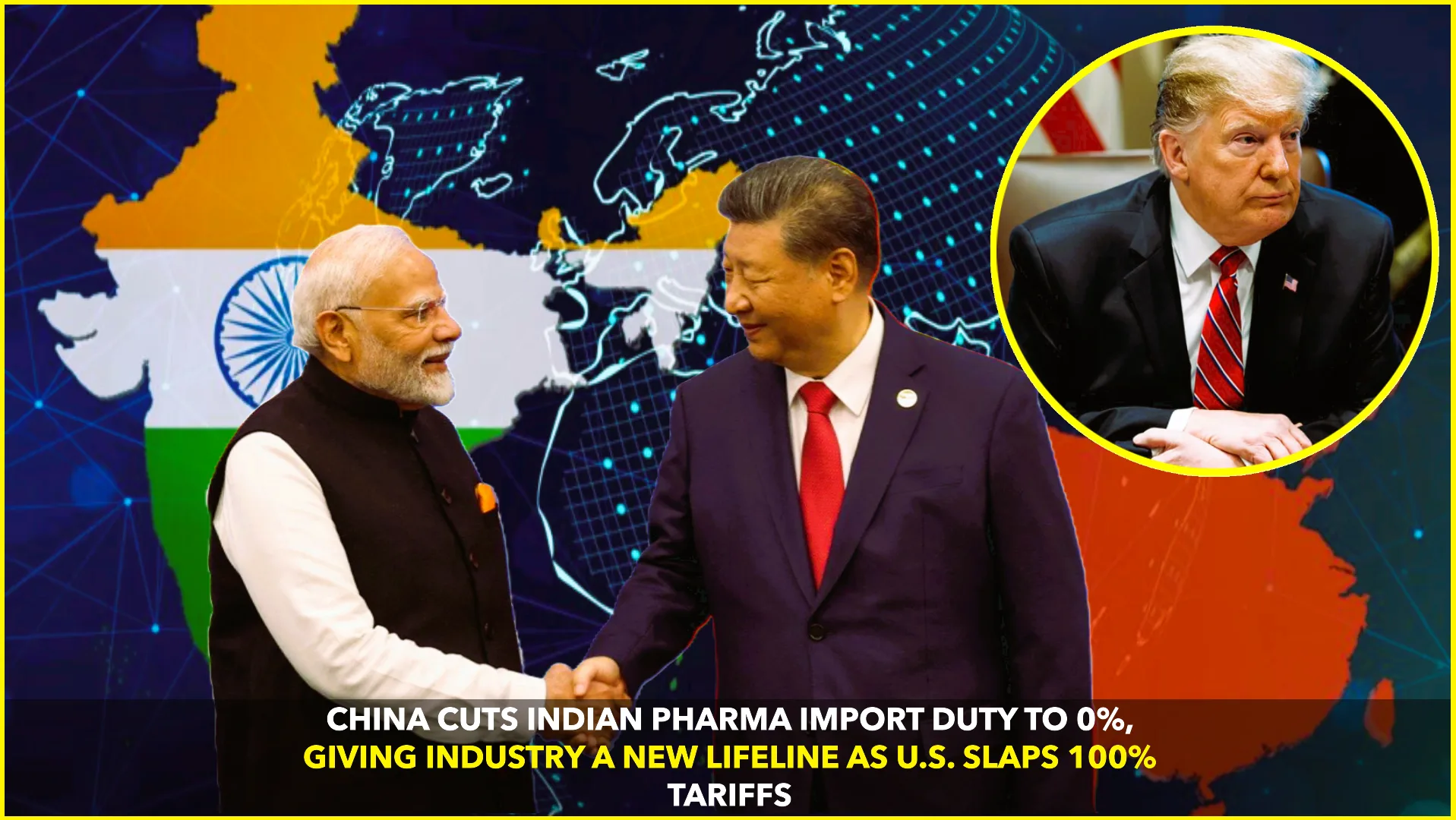In a dramatic policy shift, China has scrapped its 30% import duty on Indian pharmaceutical products, reducing the rate to zero. This decision gives Indian drugmakers unprecedented access to one of the world’s largest pharmaceutical markets, at a time when the U.S. has imposed tariffs that threaten India’s most critical export destination.
A Breakthrough for Indian Pharma
The move means Indian exports of generics, active pharmaceutical ingredients (APIs), and finished drugs can now enter China tariff-free, enhancing their price competitiveness. Industry watchers say this could unlock billions in new trade, given China’s growing demand for affordable medicines.
According to The Hindu BusinessLine, Beijing’s tariff cut is part of its wider effort to lower healthcare costs and reduce overreliance on Western suppliers by integrating India’s large-scale generics industry (BusinessLine, 2025).
U.S. Clamps Down
The development comes just after U.S. President Donald Trump announced a 100% tariff on Indian pharmaceutical imports, particularly targeting branded and patented drugs. The U.S. is India’s largest pharma export market, worth over $10 billion annually, and the sudden tariff escalation has rattled the sector.
As reported by The Washington Post, the decision is in line with Trump’s “America First” trade agenda, which aims to reduce dependence on imported drugs and push more production back to U.S. soil (Washington Post, 2025).
Indian pharmaceutical companies such as Sun Pharma and Dr. Reddy’s Laboratories saw their shares fall sharply after the announcement, highlighting concerns over shrinking margins and possible export disruptions.
A Game of Global Economic Chess
The timing has not gone unnoticed. While Washington raises barriers, Beijing is swinging its doors wide open. Analysts describe the move as part of China’s broader trade diplomacy, leveraging economic partnerships to counterbalance U.S. dominance.
An analysis in Nikkei Asia pointed out that China’s gesture toward India reflects pragmatism, particularly in health security, where access to affordable drugs is crucial for its population of 1.4 billion (Nikkei Asia, 2025).
For India, the shift offers both relief and risk. The relief lies in a new growth frontier; the risk is that closer economic ties with China could create dependency in a sensitive sector.
Opportunities and Risks
Opportunities:
- Revenue Diversification: With U.S. access under pressure, India can rebalance toward Asia.
- Competitive Edge: Zero duty makes Indian medicines cheaper than Western rivals in China.
- Strategic Leverage: India could use this as a step toward deeper trade talks with Beijing.
- Global Standing: Greater access to China enhances India’s role in global health supply chains.
Risks:
- Non-tariff Barriers: China could still slow approvals or impose regulatory hurdles.
- Domestic Pushback: Chinese pharma firms may lobby to limit foreign competition.
- Uncertainty in U.S.: Further escalation could leave India vulnerable despite China’s opening.
- Quality Concerns: Maintaining high regulatory standards will be key to sustaining trust.
A Financial Times report warned that Indian exporters must carefully navigate China’s stringent quality requirements and complex market environment to capitalize on this opening (Financial Times, 2025).
What’s Next?
- Implementation clarity: Indian exporters await details on how China will roll out the zero-duty regime.
- Export shift: Data over the next few quarters will show if Indian firms redirect shipments from the U.S. to China.
- Geopolitical impact: The move could reshape trade equations not just between India, China, and the U.S., but globally.
Conclusion
China’s elimination of tariffs on Indian pharmaceuticals marks a pivotal moment in global trade dynamics. With Washington imposing barriers and Beijing lowering them, India’s pharmaceutical industry now finds itself navigating between two superpowers. If executed wisely, this opening could safeguard revenues, diversify markets, and reaffirm India’s role as the world’s leading generics supplier.










